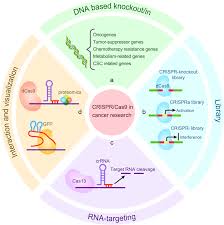CRISPR/Cas9 : Study

Researchers recently used CRISPR/Cas9 to alter photosynthesis for the first time.
- CRISPR, short for Clustered Regularly Interspaced Short Palindromic Repeats, is a gene-editing technology that can be used to alter the genetic sequence of a specific gene by removing, adding, or altering sections of the DNA sequence.
- It makes it possible to correct errors in the genome and turn on or off genes in cells and organisms quickly, cheaply, and with relative ease.
- Some bacteria have a similar, built-in gene editing system to the CRISPR-Cas9 system that they use to respond to invading pathogens like viruses, much like an immune system.
- Using CRISPR, the bacteria snip out parts of the virus DNA and keep a bit of it behind to help them recognise and defend against the virus next time it attacks.
- Researchers adapted this immune defense system to edit DNA.
- The CRISPR-Cas9 system consists of two key molecules that introduce a change (mutation) into the DNA. These are:
- An enzyme called Cas9, acts as a pair of ‘molecular scissors’ that can cut the two strands of DNA, at a specific location in the genome so that bits of DNA can then be added or removed.
- A piece of RNA called guide RNA (gRNA), consists of a small piece of pre-designed RNA sequence (about 20 bases long) located within a longer RNA scaffold.
- The scaffold part binds to DNA and the pre-designed sequence ‘guides’ Cas9 to the right part of the genome.
- This makes sure that the Cas9 enzyme cuts at the right point in the genome.
- The guide RNA is designed to find and bind to a specific sequence in the DNA.
- Cas9 follows the guide RNA to the same location in the DNA sequence and makes a cut across both strands of the DNA.
- Once the DNA is cut, researchers use the cell’s own DNA repair machinery to add or delete pieces of genetic material, or to make changes to the DNA by replacing an existing segment with a customized DNA sequence.
- CRISPR-Cas9 has a lot of potential as a tool for treating a range of medical conditions that have a genetic component, including cancer, hepatitis B, or even high cholesterol.




